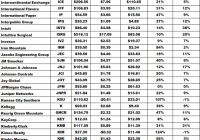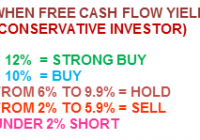After Value, Dividend And Quality, Momentum Has Also Started To Lag
Summary Large groups of Value, Dividend and Quality stocks have been lagging the market for one year. Momentum was a good place to hide until September. The last weeks have been harmful for Dividend and Quality stocks. A previous article published on 9/1 pointed out that groups of stocks broadly selected on value, dividend and quality criteria have been lagging the benchmark since the 3rd quarter of 2014. To spare you the time of reading it, this was the conclusion: In the recent months, a wide outperformance of momentum stocks has been detrimental to value, dividend and quality stocks. The recent correction was beneficial to dividend stocks excess return, but value and quality are still lagging. This fashion in momentum explains why a lot of investors with portfolios based on value and quality factors have underperformed the market in the recent months. The trend started in June 2014, and accelerated in June and July 2015. This phenomenon is not limited to a small group, it is widely spread in the 100 best stocks of the S&P 500 index (NYSEARCA: SPY ) in each investing style category. These categories are simplified by taking the top 20% of the S&P 500 ranked on a unique factor. The top 20% of value stocks is defined as the 100 S&P 500 stocks with the lowest price/earnings ratio (P/E trailing 12 months, excluding extraordinary items). The top 20% of dividend stocks is defined as the 100 S&P 500 stocks with the highest yield. The top 20% of quality stocks is defined as the 100 S&P 500 stocks with the highest return on equity (ROE trailing 12 months). The top 20% of momentum stocks is defined as the 100 S&P 500 stocks with the highest price increase in 1 year (250 trading days). Variations in the relative performance of such large groups of stocks may be random on short periods. When they are consistent on long periods, they denote a behavioral change in the market. My aim here is to observe and quantify this change, not to explain it. Hereafter you can see the equity curves and statistics of the four “top 20%” groups for the last 3 months. The lists are updated and equal-weighted on market opening of the first trading day every week. Dividends are reinvested. Top 20% Value: (click to enlarge) Top 20% Dividend: (click to enlarge) Top 20% Quality: (click to enlarge) Top 20% Momentum (click to enlarge) The next table gives the annualized excess return over SPY of the top 20% group for each category since 1/1/1999, then on the last 12 months, 6 months, 3 months and 1 month. Annualized excess return of the top 20% stocks in… Since 1999 Last 12 months Last 6 months Last 3 months Last month Value 6.89% -7.67% -12.58% -10.4% -12.99% Dividend 5.37% -4.22% -5.93% -2.6% -34.16% Quality 4.91% -2.53% -7.49% -9.69% -30.14% Momentum 3.63% 4.45% 6.45% -2.2% -16.64% The long term outperformance of all groups confirms that investors following any of these investing styles can get a positive statistical bias. This has been documented in countless academic publications. Value investing has an edge over other styles. However, value stocks have been lagging for more than 1 year (since June 2014 exactly). The sector meltdown in energy and some basic materials companies is an incomplete explanation: it is accountable for less than half of the negative excess return of value stocks on this period. The relative loss has accelerated a bit in the last month. Dividend and quality stocks have also been lagging for at least one year, and their underperformance has accelerated considerably in the last month. Momentum stocks have been outperforming their own historical excess return for at least 1 year, but they did worse than SPY in the last 3 months, and especially in the last month. Conclusion Until September, we could interpret the situation as a transfer of excess return from value, quality and dividend to momentum. Lately, momentum has also underperformed and the benchmark index has done better than the 4 groups of stocks representing classic investing styles. After looking at data before the 2 major downturns since 1999, my previous article concluded that such patterns don’t seem to be clues to identify a market top. There are cycles of variables amplitudes and time frames in asset classes, sectors and investing styles. On the long term, value, dividend, quality and momentum offer a statistical bias. On the short term, investors following quantitative or discretionary strategies based on these styles may experience more frustration before getting back their edge. Updates I plan to publish updates on investing styles performance. If you don’t want to miss the next one, click “follow” at the top of this article. Data and charts: portfolio123

